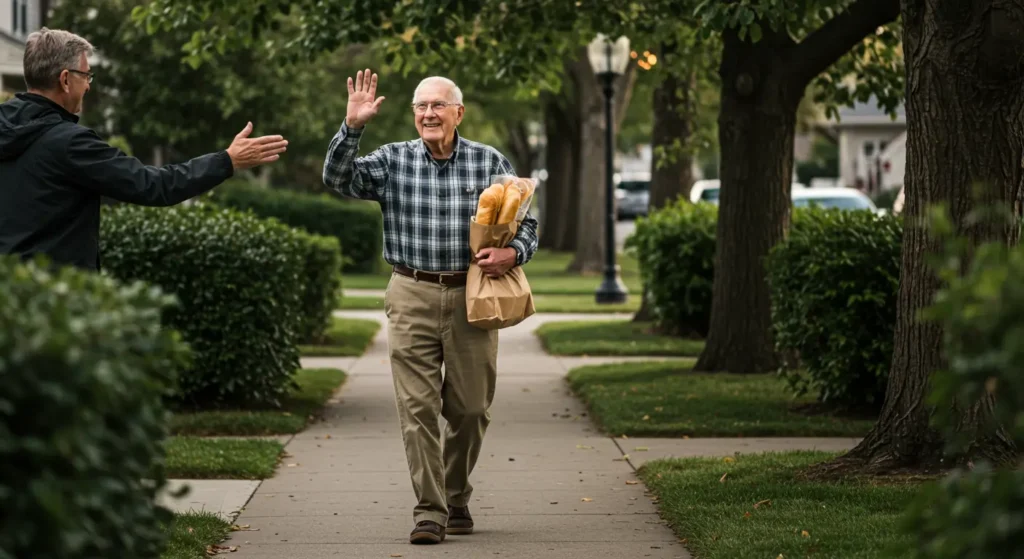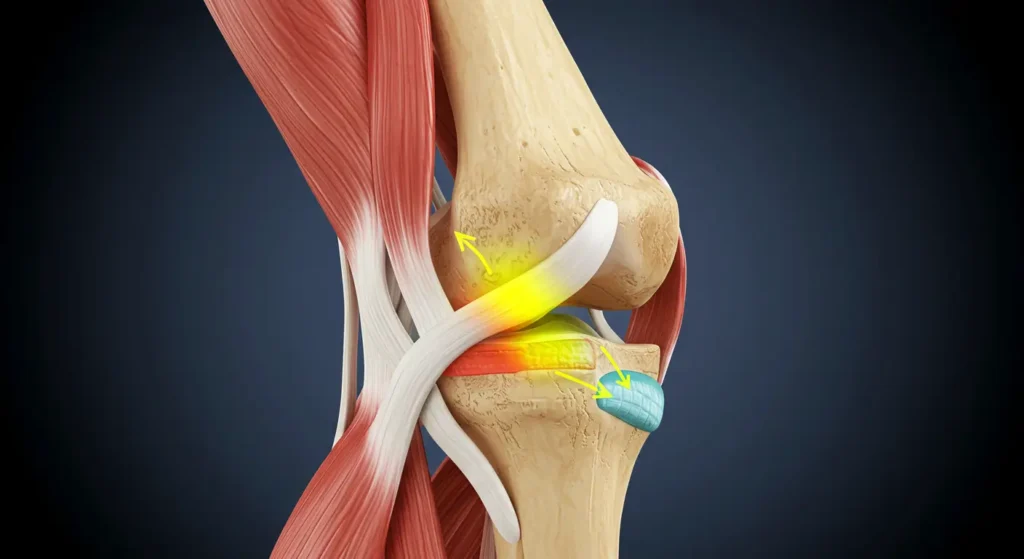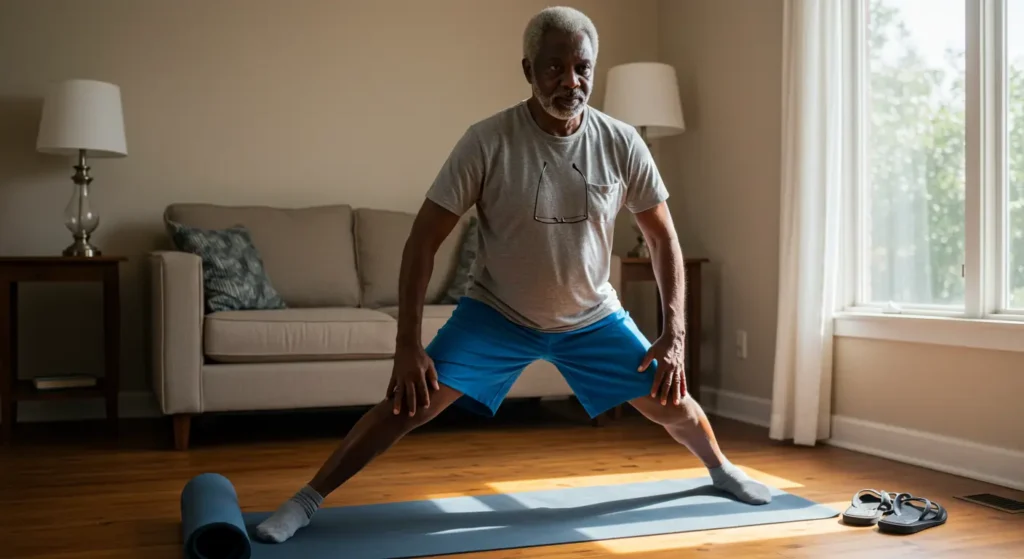Walking is one of the simplest, most accessible forms of exercise — and for adults over 60, it’s often recommended as a way to stay active and mobile. But if you struggle with knee pain, you may wonder: Is walking good or bad for knee pain after 60? Could it be helping your joints… or making things worse?

The answer isn’t one-size-fits-all. While walking can offer powerful benefits for joint health, there are also situations where the wrong type of walking — or too much of it — may aggravate pain. In this article, we’ll explore what science and real-world experience say about walking with knee pain after 60, and how to do it safely and effectively.
You’ll also learn simple daily habits that support your knees, reduce inflammation, and help you move with more comfort and confidence.
Walking and Knee Pain After 60 – What You Should Know

Knee pain becomes increasingly common with age — especially due to wear and tear on cartilage, joint inflammation, and loss of muscle support. Many people experience:
- Aching or stiffness in the knees after sitting
- Pain during or after walking
- Difficulty climbing stairs
- Swelling or cracking sounds in the joint
But here’s the good news: Walking — when done properly — can actually help reduce some of these symptoms. It promotes circulation, keeps the joint lubricated, and strengthens the muscles that support the knee.
However, walking with poor form, on hard surfaces, or without the right footwear can do more harm than good. That’s why it’s important to tailor your approach — especially after 60 — to support your specific needs.
💡 Tip: Start slow, choose soft or even walking paths, and listen to your body. Discomfort that improves with movement is often normal; pain that worsens may need further attention.
When Walking Helps – And Why It Works
For many seniors, gentle walking can be one of the best ways to ease joint stiffness and support long-term knee function. Here’s why:
- It keeps the synovial fluid moving, which nourishes cartilage and reduces friction inside the knee joint.
- It strengthens the muscles around the knee — particularly the quadriceps and hamstrings — which provide stability and absorb impact.
- It improves circulation, helping reduce inflammation that contributes to pain and swelling.
- It supports weight management, which is critical since excess weight adds pressure to the knees.
Even short, regular walks (10–20 minutes) can provide noticeable benefits — especially when combined with stretching or joint-supportive routines. Over time, this consistent, low-impact movement builds resilience. For added comfort during walks, a knee compression sleeve for walking can offer gentle support and help reduce strain.
And if you’re already using daily joint care strategies, walking can amplify those effects — promoting flexibility and joint alignment naturally.
When Walking Might Make Knee Pain Worse
While walking has many benefits, it’s not always the right solution for everyone — especially when certain risk factors are present. In some cases, walking may irritate an already inflamed or unstable joint, making the pain worse instead of better.
Watch out for the following red flags:
- Sharp or stabbing pain during or after walking
- Swelling that worsens after activity
- Unstable or “giving out” knees
- Pain that lingers or intensifies over several days
These symptoms may indicate an underlying issue like arthritis flare-ups, meniscus damage, or patellar misalignment. If ignored, pushing through the pain could delay recovery or worsen the condition. If inflammation flares up after walking, using a cold therapy knee gel wrap may help relieve swelling and soothe discomfort naturally.
💡 Important: If you’re experiencing these problems, reduce intensity and focus on restoring balance, mobility, and joint alignment first.
You may also benefit from this breakdown of anti-inflammatory foods that help with knee pain after 60 — a key part of long-term relief.
Simple Daily Habits That Support Your Knees

Whether you walk every day or only occasionally, your knees depend on more than just movement. Daily habits that support alignment, flexibility, and joint recovery can make a big difference — especially after 60.
Here are a few powerful habits to adopt:
✅ Stretch before and after walking – Focus on calves, hamstrings, and quads to reduce joint tension.
✅ Strengthen the surrounding muscles – Gentle bodyweight exercises like wall sits or step-ups build support.
✅ Apply a warm compress in the morning – It can loosen stiff knees and ease you into movement.
✅ Elevate and rest after walking – Especially helpful if swelling tends to occur after activity.
✅ Stay consistent with natural joint support strategies – These may include low-impact routines, mobility exercises, or supportive tools designed specifically for aging knees. Light resistance bands — like these gentle resistance bands for seniors — can help strengthen supportive muscles without strain.
💚 Many older adults also find relief by using gentle, structured methods that target joint mobility and posture — check out this guide on daily habits to relieve knee pain naturally after 60 for practical ideas.
How to Make Walking Safer and More Comfortable After 60

If you want to make walking a sustainable part of your routine — without worsening knee pain — small adjustments can go a long way. Here’s how to walk smarter, not harder:
👟 Choose the right footwear: Use supportive shoes with cushioning and arch support. Avoid worn-out soles or high-impact sneakers. Supportive footwear is essential. Consider walking shoes for bad knees designed with extra cushioning and joint protection.
🛣️ Stick to softer surfaces: Grass, rubber tracks, or even treadmills are gentler on joints than concrete.
🚶♂️ Short, frequent walks are better than long ones: Especially if you’re recovering from joint discomfort.
🧍♀️ Focus on your posture: Keep your shoulders relaxed, look forward (not down), and engage your core to reduce knee strain.
🧊 Use recovery tools post-walk: Ice packs, gentle massage, or elevation can help prevent inflammation from building.
If walking becomes difficult or painful despite these steps, it’s worth reviewing the top signs of poor joint health after 60 — your body may be asking for a different kind of care.
Conclusion – Walking the Right Way for Knee Health After 60
So, is walking good or bad for knee pain after 60? The truth is — it can be both. When done correctly, walking helps nourish the joints, build strength, and reduce stiffness. But when ignored or done without care, it may aggravate underlying issues.
That’s why the key is balance.
By listening to your body, using supportive habits, and following a consistent low-impact approach, walking can be one of the most beneficial tools to protect and strengthen your knees — even later in life.
And if you’re ready to take the next step, there are natural methods designed especially for people over 60, focused on restoring joint alignment, reducing pain, and building real mobility — from the comfort of home.
👉 Want a natural solution to walk pain-free again?
✅ Try a step-by-step home method designed to reduce knee pain, improve mobility, and support healthy joints — all without complicated routines or equipment.
🛑 Disclaimer
This article is for informational purposes only and is not a substitute for medical advice. Always consult your doctor or a licensed healthcare professional before beginning any new exercise program or joint care routine — especially if you have a pre-existing condition or persistent pain.
